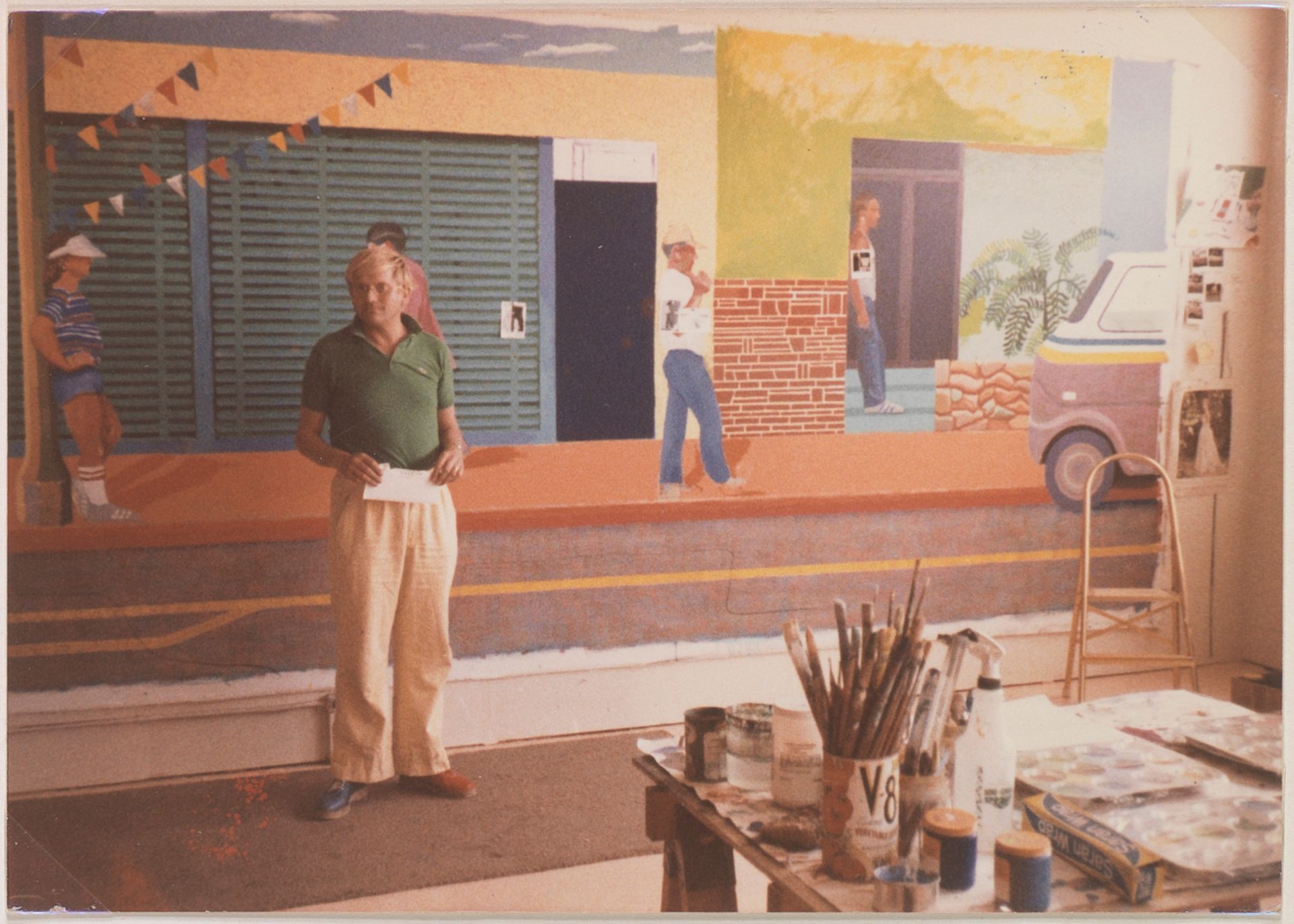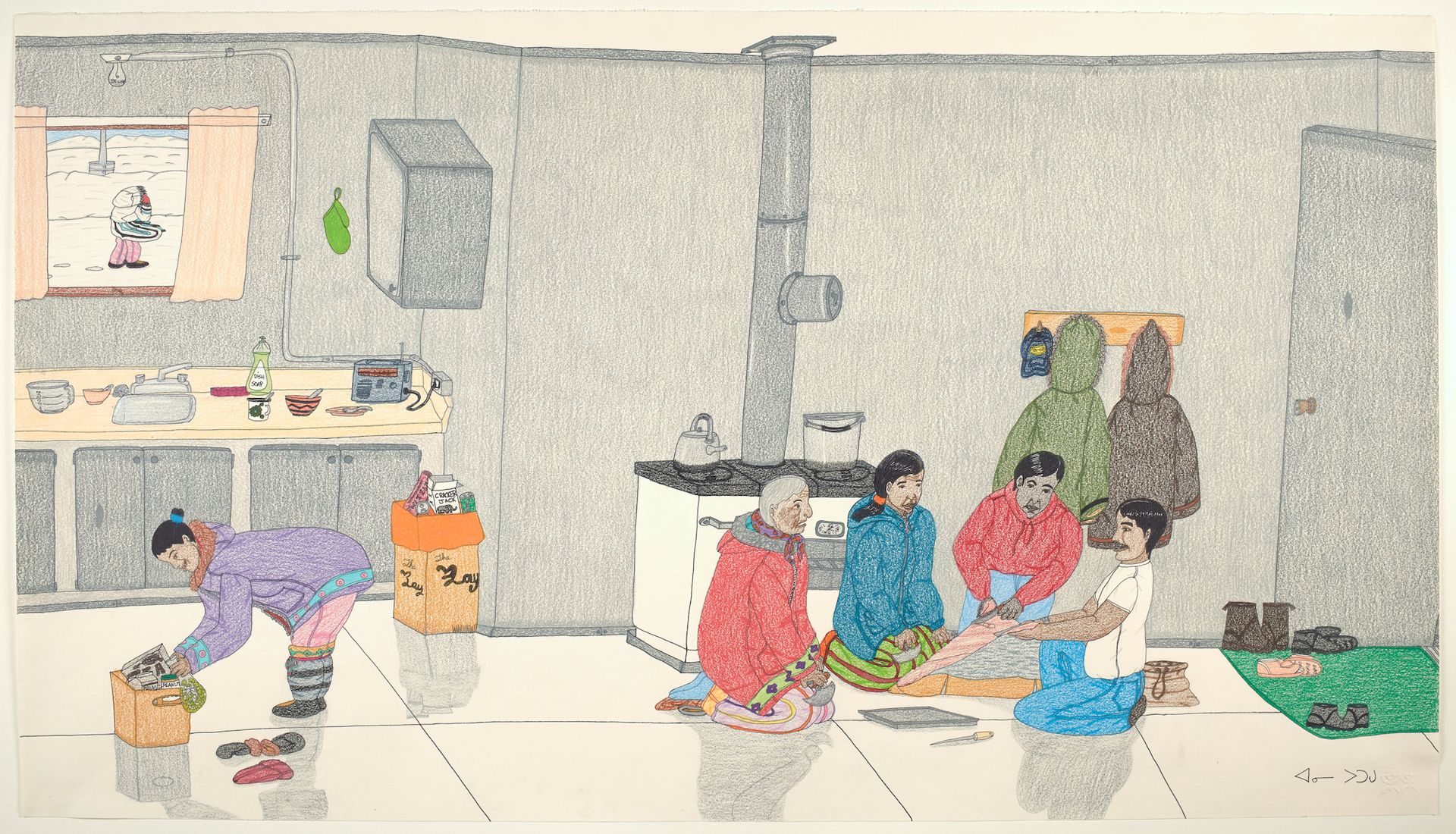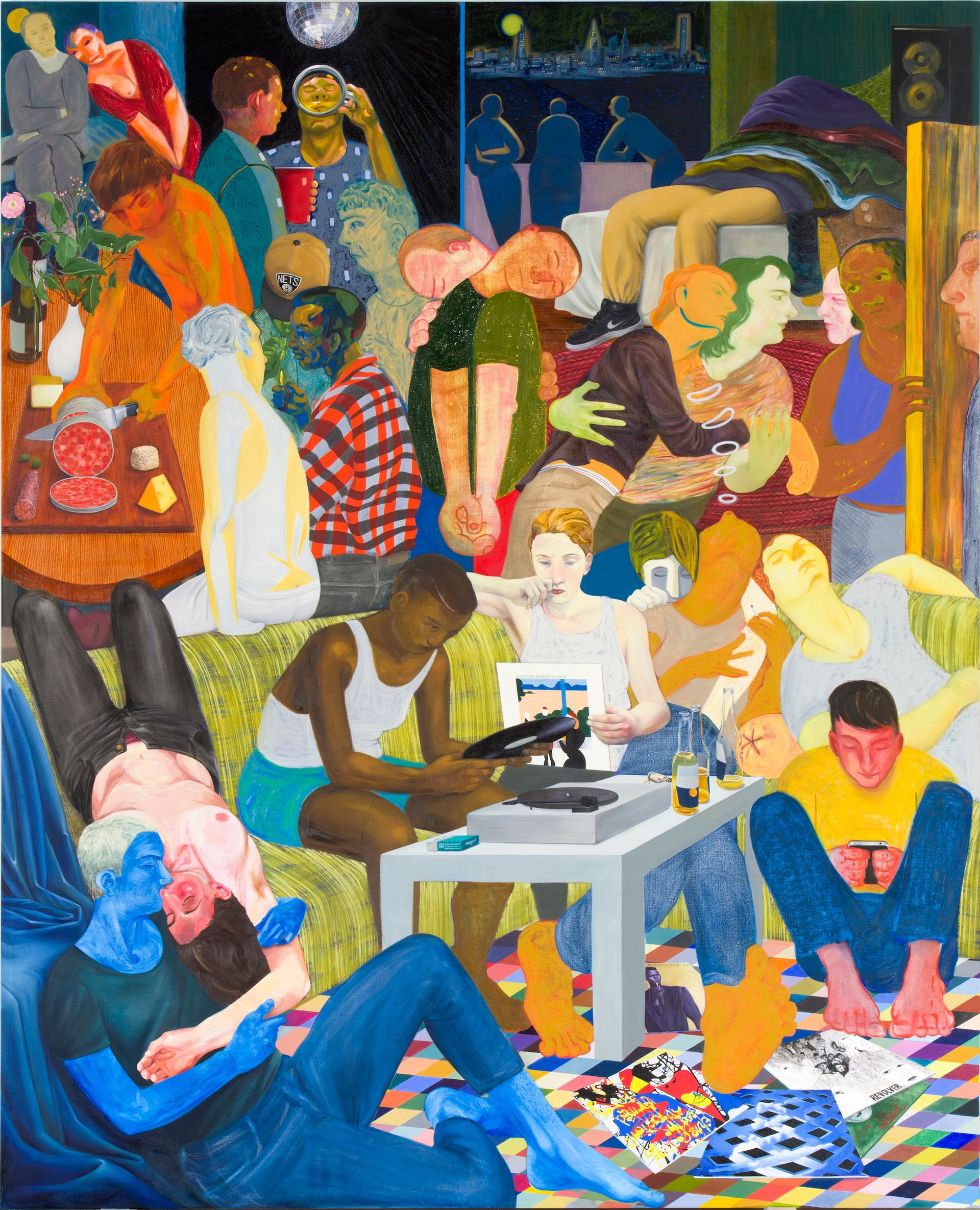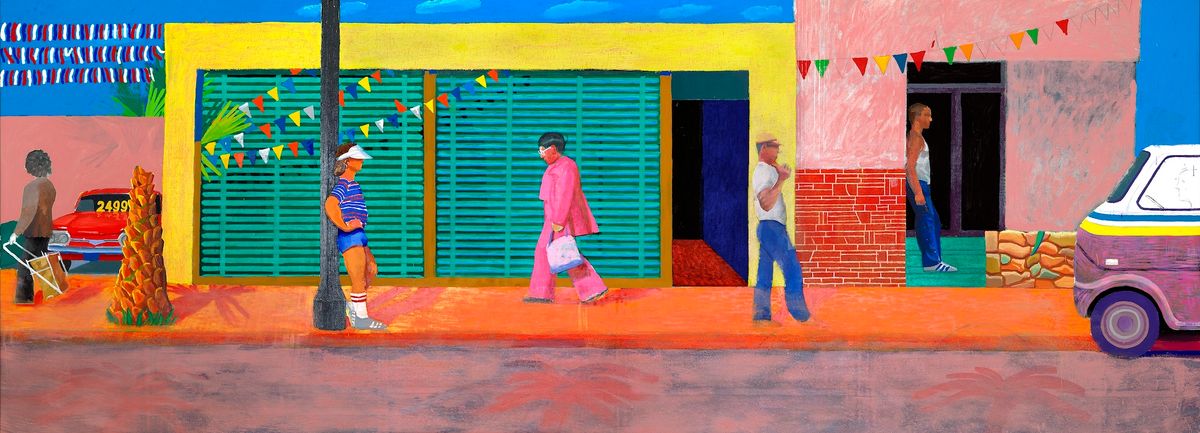The Art Gallery of Ontario’s (AGO) latest blockbuster, I Am Here: Home Movies and Everyday Masterpieces (until 14 August), features a very unfamiliar work by a familiar name. Highlighting the wide-ranging show inspired by film archivist Rick Prelinger and co-curated by Jim Shedden and Alexa Greist, which AGO director Stephan Jost says encompasses “everything from grocery lists to TikToks”, is a massive canvas by David Hockney titled Santa Monica Boulevard (1978-80). It has been rolled up and stashed away at the Hockney Foundation for nearly 30 years and has never been seen in North America. In fact it has only been shown publicly once, back in 1994 in Japan.
Santa Monica Boulevard is hard to miss. It stretches a whopping 24ft wide, just short of the women’s long jump world record, to put that into perspective. A spokesperson for the Hockney Foundation acknowledged it is one of his largest works on a single piece of canvas, and it captures the scene to a tee. “It’s almost the effect of driving along the street,” she said. Or, as Hockney put it, “The architecture is made to be seen when you’re moving fast.”
Having been under wraps for so long it appears very fresh. “The condition is fantastic—it was a delight to unroll it,” the spokesperson added. “The colours are so vibrant.” Hockney was using a new kind of acrylic paint at the time.

David Hockney working on Santa Monica Boulevard in his studio, West Hollywood, California, around 1978-80.
It does appear unfinished, a reflection of the artist’s experimental streak. “It was at the end of something, then he was on to something else,” the spokesperson suggested. “He was breaking new ground. Maybe it was of less interest to him then. He’s continually pushing borders.”
The spokesperson did have a cute tale to tell. The piece apparently appears in a large Taschen book on Hockney’s work that also includes a drawing of a street scene in Bradford, his hometown, done when he was very young. In comparing it to the Santa Monica work, he was said to have joked, “You can see why I needed to leave.”
There are many lighter sides to the show, as befits the title, but as co-curator Shedden put it, “We did embrace a dark side, too.” That’s evidenced in Arthur Jafa’s much-heralded video collage Love is the Message, the Message is Death (2016), which is set to Kanye West’s song Ultralight Beam. It’s a little over seven minutes long, with a mix of disturbing scenes and happier moments, including flashes of inspirational figures and stars of sports and pop music. It’s so captivating, it demands a second look.

Pieter Brueghel the younger, The Peasants' Wedding, mid-16th to mid-17th century Photo © Art Gallery of Ontario
The show launches with Werner Herzog’s film Cave of Forgotten Dreams (2010), taking us back to much earlier times. That is followed a little later by works by Jan Steen and Pieter Brueghel the Younger. The latter's painting The Peasants’ Wedding (16th-17th century) is a delight. But most of what is on offer is from our own lifetimes, or nearly so.
The New York scene is well represented, including nearly a dozen canvases and drawings by Jean-Michel Basquiat, among them T.V. Dinner and American Chinese Food (both 1986). His mentor, Andy Warhol, is also featured. His Time Capsule–2 (around1968) includes a note from his publisher referencing the “Castrelli Gallery” (make that Castelli), an early Fantastic Four comic book and a poster for a Jean Dubuffet show at Pace Gallery.

Annie Pootoogook, Skinning a Seal in the Kitchen, 2004-05, coloured and metallic pencil, black porous-point © Dorset Fine Arts 2006/54
No AGO show would be complete without a significant Canadian component. Among those with ties to Canada are William Kurelek, Greg Curnoe, Jack Bush, Jack Chambers, Denyse Thomasos (also a presence at the ongoing Toronto Biennial and the just-opened Whitney Biennial), Mary Pratt and Annie Pootoogook. Not to forget painter William Fisk, who is described as an “accidental collector”. He has assembled an amazing array of cameras, projectors, splicers, staplers, pencil sharpeners and other objects we once found indispensable but that are now all but forgotten.
Rock and rollers strut their stuff, too, with Patti Smith’s photo of her dad’s favorite coffee cup bought at Charles Dickens’s house in London especially touching. There are Nike Air Jordan sneakers worn by an E Street Band member (conjuring up images of Brian Jungen’s current Biennial contribution) and an interesting take on the Beatles’ White Album. A large 2015 canvas by Carnegie Prize winner Nicole Eisenman takes its name from a Brian Eno album, Another Green World, which appears in the work.

Nicole Eisenman, Another Green World, 2015 Los Angeles Museum of Contemporary Art. Purchase with funds provided by the Acquisition and Collection Committee. © Nicole Eisenman, Courtesy of Hauser & Wirth
Stars of a different sort, Barack and Michelle Obama, are also on view. Their portraits, by Kehinde Wiley and Amy Sherald, unveiled at the National Portrait Gallery in Washington, DC in 2018, have gone on a national tour, including a stop at the Art Institute of Chicago that provides the backdrop to a collection of 58 selfies displayed on an iPad. The install is accompanied by a list of the photographers.
“Selfie”, now where did that term come from? Apparently from an inebriated Aussie describing a self-portrait photograph back in 2002. Here’s to you, mate.
- I Am Here: Home Movies and Everyday Masterpieces, until 14 August, Art Gallery of Ontario, Toronto.


